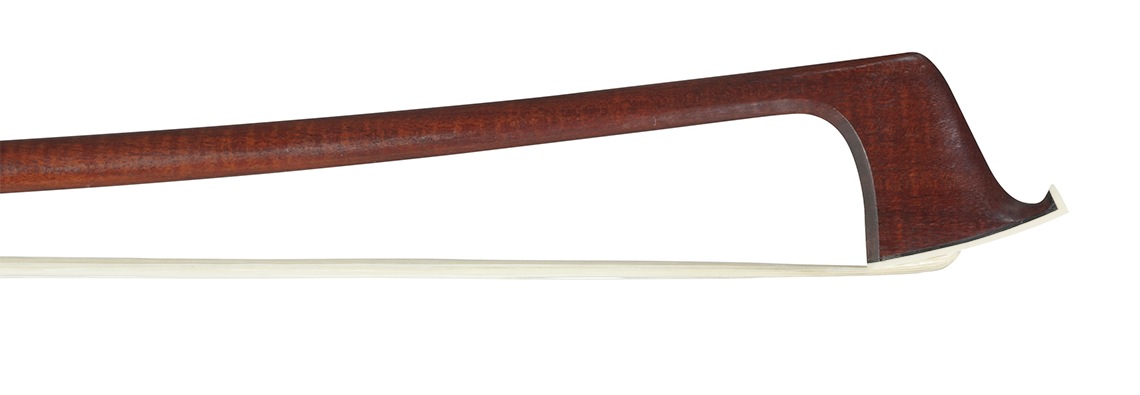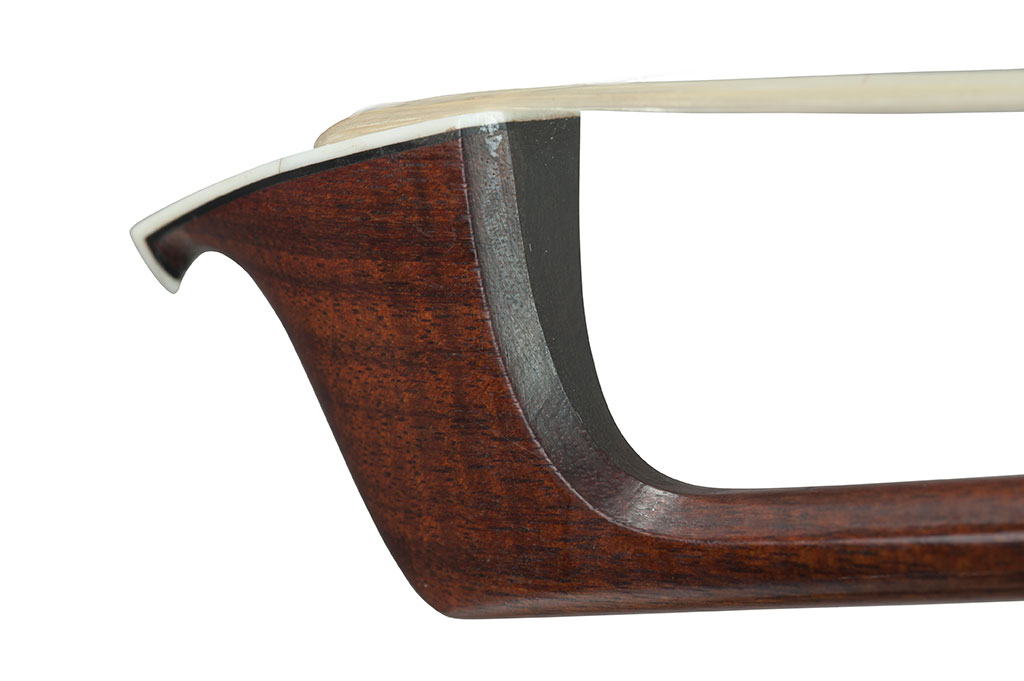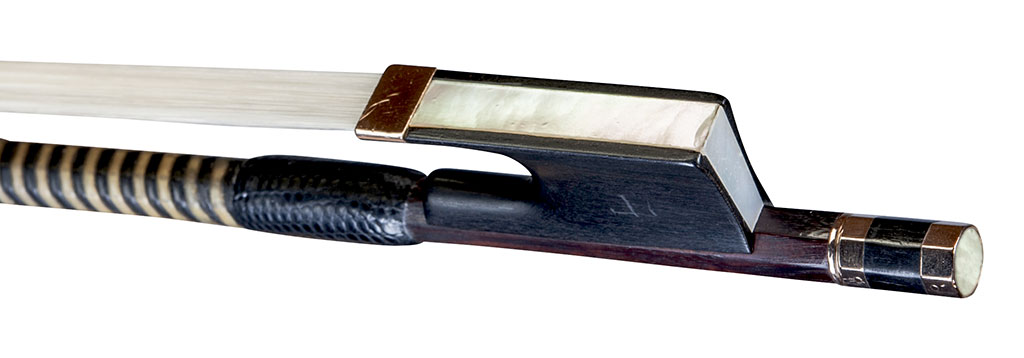Newsletter / February 2014

»ex Eugène Ysaye / ex Isaac Stern«
Over the past few years, there has been one particular question clients and friends alike have never tired of asking: »What is the absolute non plus ultra, the crème de la crème of bows – who or what is representing the pinnacle of French bowmaking?«
Of course, the first examples that spring to mind are the two gold and tortoiseshell »ex Prince Demidoff« and »ex Adolf Busch« François Xavier Tourte bows. Also part of this elite echelon is an exquisite gold- and tortoiseshell-mounted Jean Pierre Marie Persoit bow which is currently part of a fine New York collection. Furthermore, there are at least five striking examples by Dominique Peccatte owned by our clients which qualify. And last but not least, there is the mint preserved gold and tortoiseshell »ex Paganini« Grand Adam.
Two bows which definitely belong in this class are showcased here. One is the »ex Ysaye / ex Stern«, the other the »ex Sivori / ex Szeryng«, both violin bows made by the great Etienne Pajeot of Mirecourt.
»ex Eugène Ysaye / ex Isaac Stern«
»ex Camillo Sivori / ex Henryk Szeryng«
Not only do these two bows constitute the zenith of this master’s work, in which there is no dearth of peak achievements, but they are almost twins and were definitely made around the same time.
Made around 1835, these two bows epitomize the unsurpassed talent of Pajeot to create unique and outstanding bows. It is difficult to put into words the stunning power and allure of these excellent specimens as the workmanship is without peer:
The choice of wood is beyond inspired; and the use of mother of pearl represents two different aesthetic ideas.
The Chamfers
»ex Eugène Ysaye / ex Isaac Stern«
Both sticks are immaculately crafted and betray not the slightest technical uncertainty. The heads are of consummate elegance and the chamfers are flawless, as if cut by laser.
»ex Eugène Ysaye / ex Isaac Stern«: Audience Side
The Frog: »ex Eugène Ysaye / ex Isaac Stern«
The tortoiseshell on the »ex Ysaye / ex Stern« violin bow represents a most passionate nature and is framed by breathtaking mother of pearl, which is in the style of early F. X. Tourte bows.
»ex Eugène Ysaye / ex Isaac Stern«
François Xavier Tourte, ca. 1795
Pajeots Metalwork
The gold and copper used in the frog is a wonderful example of Pajeot’s innovative and creative use of metal. Particularly revealing is the way he chose and used less than 18K gold, which helped to increase the resistance and rigidity of the gold, and allowed for his characteristically thin metalwork.
The copper liner on the frog is an example of frugality as are the copper rings surrounding the mother of pearl eyes.

The button displays a copper plate which has been soldered onto the thin layer of gold, thus enabling Pajeot to cut a collar despite the metal’s thin proportions.
As in all Pajeot bows, the original screw and eyelet show superb workmanship and are extremely durable.
The Frog: »ex Sivori / ex Szeryng«
While the tortoiseshell-mounted frog of the »ex Sivori / ex Szeryng« bow might not have quite the same fiery temperament, its refined golden colour is quietly captivating.
The style of a bent heel plate, a single piece of gold in this example, is typical in most of his production. The liner and the Parisian rings around the mother of pearl eyes are gold as well. Choosing gold in this example in comparison to copper in the »ex Ysaye / ex Stern« bow may suggest that this bow was made for a somewhat more prosperous client who was willing to pay for that upgrade.
The button does not match stylistically to any other work by Pajeot nor does the gold correspond with the gold of the frog; it is therefore deemed not original and fitted onto the bow at a later date.
Conclusion
It is no overstatement to say that these two bows are unique in their superlative workmanship and brilliant presence. It may well be that nothing comparable within Etienne Pajeot’s oeuvre will ever come to light, including the history and provenance of these bows. It is therefore particularly gratifying to note that both these bows can be found among our clientele. We are most grateful to an unnamed collector and a world class soloist to have offered us the opportunity to study these bows and to present our findings through the FBRI.
Authors
Stephan Jansen, London / Isaac Salchow, New York City
Scientific Investigations
Brigitte Brandmair, Munich
Photos
Rachel Drehmann, NYC / Brigitte Brandmair, Munich
Copyright
Isaac Salchow, NYC / Stephan Jansen, London – All rights reserved.












